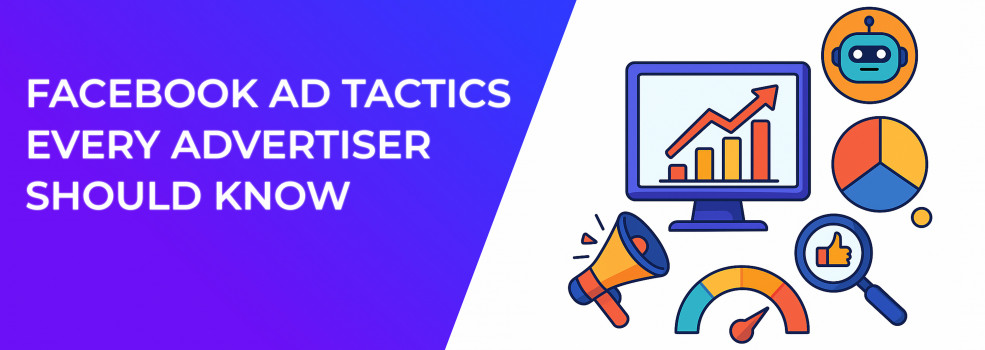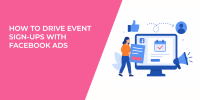*Benchmarks compiled from 2025 e-commerce and SaaS data.
If your Facebook CPM is climbing but impressions remain flat, inspect creative fatigue and placement overlap. Should Facebook CPC spike after a new audience launch, revisit targeting relevance. Each metric whispers a story; your job is to listen.
For a deeper dive into reading Facebook ad performance metrics, skim this step-by-step analytics tutorial.
2. Let Automation Work — But Never On Autopilot
Meta’s Advantage Campaign Budget and classic campaign budget optimization move spend toward winning ad sets faster than any human can. Still, algorithms amplify whatever signals you feed them, good or bad. Use this three-point checklist to keep automation honest:
-
Structure campaigns by funnel stage — Prospecting, Retargeting, Loyalty — to feed the system clean intent data.
Not sure which objective fits your funnel? Meta ad campaign objectives explained will help you choose the right setting before you turn on automation.
-
Set a daily cap for each campaign that you can stomach for two full weeks. Shorter windows starve the algorithm.
-
Seed no fewer than three ad sets so the machine has real choice. Variety fuels smarter bidding.
After fourteen days, pull the built-in Facebook advertising analytics report. If a losing ad set still soaks up budget, throttle it manually and redirect funds to the proven winners.
Speed matters — see how to finish the Facebook learning phase quickly so delivery stabilizes sooner.
3. Stack Audiences in a Targeting Pyramid
Random interest combos have faded; structured Facebook targeting has taken their place. If you need a fundamentals refresher, start with Facebook Ad Targeting 101: How to Reach the Right Audience.

Stacking audiences by intent ensures each stage of your funnel gets the right message at the right time.
Picture your audiences as a pyramid of intent:
-
Broad + Interest stacking — mass reach, primes the pixel.
-
Lookalike 1% — quality rises while scale remains affordable.
Still debating Custom vs. Look-alike? This comparison of Custom vs Lookalike Audiences lays out the pros and cons.
-
Website visitors 30 days — classic retargeting ads Facebook tactic.
Need a practical walkthrough? Follow this guide on how to set up Facebook retargeting step by step.
-
High-intent events like Add-to-Cart — smallest pool, highest conversion rate.
Spend flows down the pyramid as prospects warm up. Keep your Facebook Pixel firing on every significant action so each layer feeds the next.
4. Treat Creative Like a Scientific Experiment
Scrolling thumbs decide your fate in half a second. And if you suspect creative fatigue, learn to spot it early with Ad Fatigue on Facebook: How to Fix It Fast.
To lift average click through rate on Facebook ads, install a weekly creative testing Facebook ads ritual:
-
Two brand-new concepts every Monday — mix UGC, animation, product demos.
-
Three copy angles per concept — problem-solution, social proof, and scarcity.
-
Dynamic placement auto-rotates assets; you kill under-performers after 1,500 impressions.
Spot a breakout hero? Clone that Facebook ad creative across every ad set before competitors catch on.
5. Fine-Tune Placements for Instant Savings
Default Advantage+ Placements serves most brands, but clever tweaks lower costs fast:
-
Vertical video thrives in Stories and Reels — expect CPM drops up to 20%.
-
Exclude Audience Network if brand safety is paramount; lower-quality sites can tank ad relevance diagnostics.
-
Run a ten-day split — Feeds vs. All Placements — using the Facebook ads split testing tool. Let data, not hunches, pick the winner.
Placements evolve with user behavior; retest every quarter.
For a broader view of placement strategy, read Why ad placement choices can make or break your Facebook campaign.
6. Run Hypothesis-Driven Experiments
Before you launch the next experiment, skim Key Strategies for Facebook Ad Testing so your hypotheses are statistically sound.
Growth demands repeatable discovery. Each week draft one hypothesis — “shorter copy cuts Facebook CPC by 15%” — and validate it with Ads Manager’s split-test feature:
-
Define the variable.
-
Set a seven-day window or 95% confidence threshold.
-
Log outcomes in a sheet labeled “ads analysis.”
-
Promote winners to evergreen; archive losers.

Structured testing helps you make creative, copy, or audience decisions based on evidence, not instinct.
Over months, this playbook transforms guesswork into a private library of Facebook advertising best practices.
7. Pair Quant With Qual for Deeper Insight
Dashboards answer what. Comments, heatmaps, and session replays answer why.
-
Scan ad comments for friction points, then rewrite headline two to solve them.
-
Trace funnel leaks in GA4. Sometimes Facebook retargeting is blamed for a landing-page hiccup.
-
Compare mobile vs. desktop. A clunky checkout can double Facebook CPC on desktop with zero upside.
Marrying numbers and narrative stops small problems from becoming costly crises.
8. Automate Winning Tactics to Free Creative Bandwidth
Finally, lock in gains so you can chase the next breakthrough:
-
Rules: Pause any ad when cost per result jumps 30% above the three-day average.
Automated rules can get sophisticated fast — this tutorial walks you through advanced setups that keep spend in check 24/7.
-
Reports: Email a Monday digest covering Facebook ad performance metrics to stakeholders.
-
Sync lists: Pipe high-LTV customers back to Meta for fresh look-a-likes each week.
Automation is leverage. Use it to trade busywork for big-picture experimentation.
Closing Thoughts
Powerful Facebook ads tips rarely hinge on secrets. They hinge on disciplined execution of fundamentals: track the right Facebook ad performance numbers, trust but verify campaign budget optimization, layer audiences intelligently, and treat creative as an endless laboratory. If conversions still lag, bookmark Facebook Ads Not Converting: How to Fix It for a quick diagnostic checklist. Do that, and your Facebook ad optimization journey shifts from frantic guesswork to steady, compounding growth, no hacks required.

